
















There’s nothing some people love more than a lake house. In fact, many think that everyone should be living on lake front property.
Not only is it beautiful, but it can provide endless recreational opportunities, solid property value, and plenty of entertainment, along with some other perks.
Here are some of the top reasons why everyone should consider having a lake home, according to a blog posted by staff from the Weeders Digest.
There’s something so peaceful about spending your free time sitting out on the dock.
In fact, living near the water has even been proven to make people healthier in many ways.
When you live lakeside, everyone wants to spend time at your house.
And most people love having a great place for family and friends to party.
Summer 2024
Published by Southern Lakes Newspapers LLC 1102 Ann St. Delavan, WI 53115 (262) 728-3411
Let’s just say your supply of fresh fish won’t run short, and you don’t even have to go to the store.
Additionally, being able to fish –whether from the shoreline, pier or your boat – opens up many possibilities to spending time with some of the younger people in your life.
There’s nothing kids love more than a big lake in their backyard as it offers much to explore and an extra level of fun.
They can spend all day swimming and playing, and the only difficult part may be getting them out of the water
Resale value when you live on a lake remains a huge positive if and when you decide to move.
When purchasing a lake home, and during the years spent enjoying it, it will likely be well worth the investment for the amount of time you’ll spend on or next to the water
Man’s best friend usually love the water just as much as their people do.
Your dogs will be forever grateful when you give them a lake to play in and watching them enjoy themselves will bring an added level of enjoyment to the family.
This is a given because the only thing that beats a stunning sunrise view from your own private beach, pier or yard…
… is a sunset from that same spot.
You’ll very likely make amazing friends living on a lake – whether full-time neighbors to weekend visitors of a lake cottage.
From bonding over morning coffee or an evening cocktail to time spent on the water taking in some fun recreation – lake living provides some of the best bonding time.
For advertising opportunities, call (262) 728-3411 or email vicki@southernlakesnewspapers.com
EDITOR IN CHIEF: Heather Ruenz
PAGE DESIGN: Jen DeGroot
CREATIVE DIRECTOR: Heidi Schulz
ADVERTISING DIRECTOR: Vicki Vanderwerff
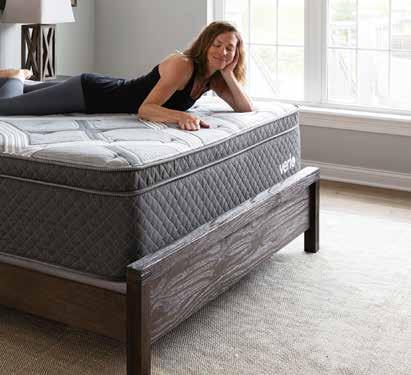















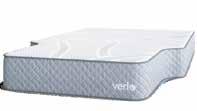

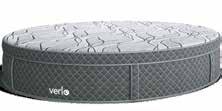
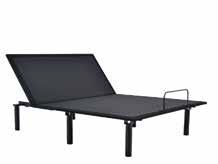















































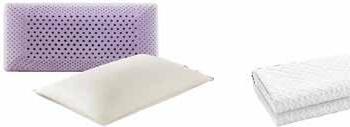



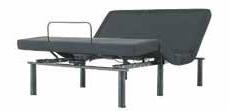
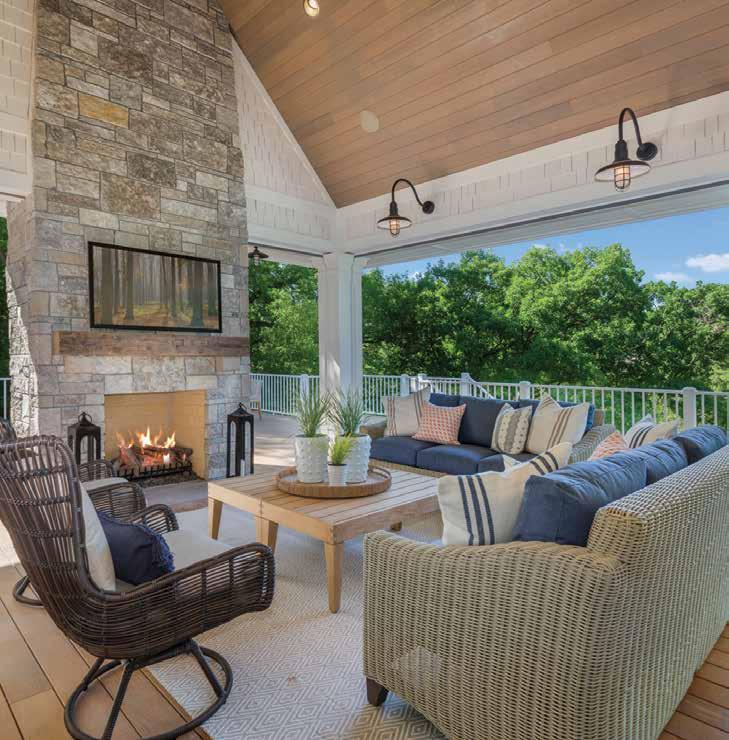
The communities that form around lakes are also extremely unique and one of the positives those who live on lakes enjoy.
It’s very likely that you and your neighbors will have a lot of shared interests, many that likely revolve around the body of water in your backyards.
You’ll have more privacy at a lake home than some homes hose with fences on all four sides.
Even if there are neighbors on either side of you, the opening to the water will offer some much-needed breathing room.
The animals you’ll find in your yard when you live on a lake are always fascinating.
They’re sure to be better than what you’ll find in the regular suburbs or even the ones at a public beach because of the additional privacy.
The bottom line is living on a lake isn’t for everyone but for those who do, there are many positives.
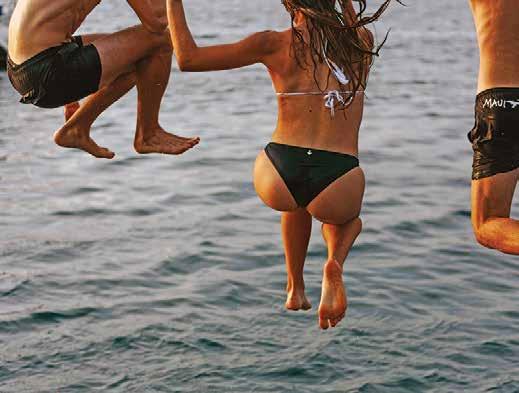





By Kim Salerno CONTRIBUTOR
With boating season in high gear now is a good time for a little refresher on pet friendly boating to ensure your little one is safe. Before hitting the water with your pet it’s important to plan ahead and always keep the best interests of your fourlegged friend in mind.
It’s recommended to take the following necessary provisions to ensure that your pet’s boat cruise is a happy and safe one for all involved.
Provide a special pet ramp for your pet to get on and off the boat. This not only includes from the dock to the boat but also from the water to the boat. Pets weigh much more when they’re wet versus when they’re dry and it can be difficult to lift them back into your boat after a swim.
A personal flotation device (a.k.a. pet life jacket) can also ensure safety while on the water. Not all pets can swim (including some dogs). Even if your pet is a good swimmer, getting tossed overboard can put any animal into a panic.
In addition, your pet could suffer from exhaustion or hypothermia. Many pets also fall into the water from the dock or while trying to get from the dock to the boat. Having your pet equipped with a flotation device with a lifting handle makes retrieving your pet much easier and safer.
Help your pet get used to the PFD by first practicing at home for short periods of time. Start by putting the PFD on your pet and let them walk around with it on. The next step is to let your pet swim with it on for a short period. It’s a new experience for your pet so it’s important for them to get used to it before the boat trip. See the related sidebar for more information about dog life jackets.
Make sure your pet has a collar with an identification tag. Include contact information, marina address and slip number
It is best to gradually introduce your pet to your boat and the water. Let your pet explore the boat while it is docked before going out on the water. Turn on the engine and let
The truth is not all dogs can swim and those that can aren’t all great swimmers. Additionally, water or weather conditions can cause problems, even for a pet that is typically a strong swimmer.
Any dog can get fatigued or disoriented and older dogs, especially, can tire easily. Pets with low body fat can have trouble when exposed to water for long periods. Health issues, such as hip or joint problems, can also make swimming difficult for some pets.
While there are no regulations regarding life jackets for pets, a dog life jacket can help keep your pet safe while aboard your boat or around any body of water
Pet life jackets are designed to keep the animal afloat in a horizontal, swimming position. The pet life jacket also serves as a retrieval device, should your pet fall overboard.
How do you choose a life jacket for Fido?
Here are a few things to consider:
• Fit – Make sure the life jacket fits securely. It’s best to check the fit in the store, before you buy.
• Lifting handles – to make retrieving your pet safer and easier
• Comfort – check to see where straps and buckles fall to make sure they won’t cause your pet any discomfort.
• Color – choose a bright color to make it easier to spot your dog in the water
• Give your pet a chance to get used to wearing its life jacket before actually getting on a boat. Allow your pet to practice swimming while wearing its life jacket, too.
For more information, visit discoverboating. com.
















If you enjoy boating, you probably enjoy taking your best friends out on your boat, especially if some of your best friends happen to have four legs and a tail.
Take a moment to review the following basic tips prior to hitting the water with your pet, suggested by the experts at discoverboating. com.
• Keep plenty of fresh drinking water available.
• Provide a shaded area –excessive exposure to the sun can cause problems for animals.
• Protect their feet – dogs absorb heat through the pads on their feet and boat surfaces can get very hot in the sun.
• Give your pet a chance to get acquainted with the boat while it is on the trailer or at the dock.
• Walk your dog so he can relieve himself before boarding; if the boat surface allows, you may wish to train him to go in a specific spot.
• Keep your first outing short, to let your dog get used to the boat movement.
• Fishing – keep lures, bait and hooks safely stored and out of reach from your dog.
• Treats – Don’t forget the treats and toys. This will help your dog understand the boat is a safe place.
them get used to its sound, smell, and feel while the boat is docked. Then, take your pet out on small cruises and gradually build up to longer cruise.
Pets do not sweat, so keep an eye out for heavy panting or drool and a rapid heartbeat. Protect pets from heat by providing some shade on the boat, providing plenty of water and keeping the deck cool to protect paw pads. Bring along a pet travel bowl and fresh water. It is critical to hydrate pets before they get into the water. Otherwise, they will drink the natural water and may get sick.
A big challenge of boating with your pet is making provisions so that they can go to the bathroom. Bringing along your cat’s litter box and securing it inside the cabin is a good solution for your feline friends.
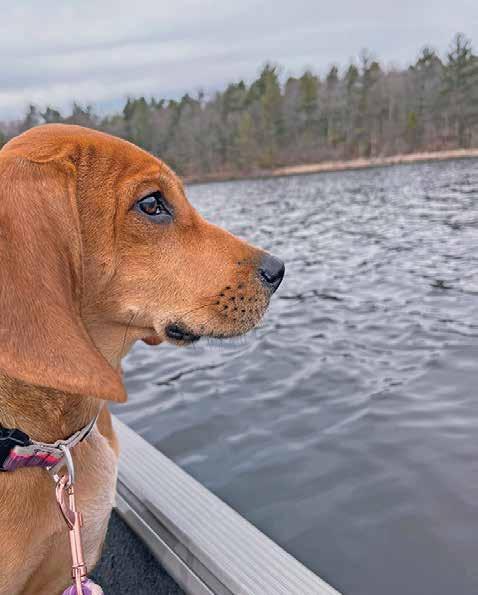
With proper preparation, especially regarding some safety guidelines, boating with your pet can be a great bonding experience. Pet owners who plan to take their furry friends aboard are encouraged to follow some basic steps to ensure a fun outing.
Dogs, however, are a bigger challenge. If your boat trip does not allow for regular land stops for your dog to do their business, then provisions must be made so that they can relieve themselves on the boat. A portable dog potty that simulates grass is an excellent solution.
If your boating destination is a marina or place that you’re not familiar with, be sure to bring along a copy of vaccination and health records. Some places may require proof of immunization before letting pets explore on land.
While most marinas and parks welcome pets, there are some that aren’t pet friendly. Be sure to call ahead before arriving on
shore.
Wishing you and your pet safe and happy travels on the water this season.
TripsWithPets.com is an online resource named best pet travel site by Consumer Reports. Its mission is to offer resources that ensure pets are welcome, happy and safe while traveling.
The website features a directory of pet friendly hotels and accommodations across the United States and Canada, as well as airline and car rental pet policies; pet friendly restaurants, beaches, and events; a user-friendly route search option; pet travel tips; pet travel supplies; and other pet travel resources.
Kim Salerno is the president and founder of TripsWithPets.com.


You bought a boat. Now how do you maintain it? Just keep the following in mind, and the first year with a new boat should be smooth sailing.
First off, engines, steering equipment, water pumps and anything else aboard that moves will benefit from use. Turn everything on and use it at least a couple of times a season. Raise and lower your anchor at the dock, for instance, if you never anchor out. Turn on a seldom-used air conditioner for at least 10 minutes every week or two. Let your circuit-breaker panel and the switches at the helm be your guide to be sure you don’t miss anything. This also ensures that everything is in working order if you ever need it.
Next, keep it clean. This isn’t just aesthetic. If the engine space is clean, you’ll see an engine-coolant or steering-fluid leak right away, so you can have it taken care of before it gets worse. Debris in the waterways around deck hatches can clog drains. Then when it rains, if the water can’t drain, it finds its way into that hatch, and sometimes onto equipment that shouldn’t get wet.
When you notice a bit of metal looking rusty or dull, take five minutes to polish it with wax that protects stainless steel and aluminum and cleans minor corrosion before it permanently etches into the finish. That time pays off at the dock, when your boat sparkles brighter than your neighbors’.
And finally, the adage a stitch in time saves nine holds particularly true on boats. If you notice fluid leaking or salt deposits forming anywhere in the engine space, for instance, take care of those small things when you see them to avoid a bigger job to work on later.
Use more than your eyes too. As you spend time aboard your boat, you’ll learn what noises and vibrations are normal. Pay attention when anything seems different, since that is often the first indicator of something amiss.
Beyond that general advice, here’s a list of maintenance items you’ll need to address during the first year:
In cold climates, winterize engines every fall to protect cooling systems where water might be trapped and freeze.
At the same time, treat engine inner workings with fogging oil to prevent corrosion. Except for a few outboards, engines require an oil change, along with new oil and fuel filters, every year.
Annual service also includes a comprehensive, though fairly simple, list of places to lubricate and inspect. Enginecooling pump impellers last for two or three years but change them more frequently if you often operate or dock in shallow, silty water, which abrades rubber impellers.
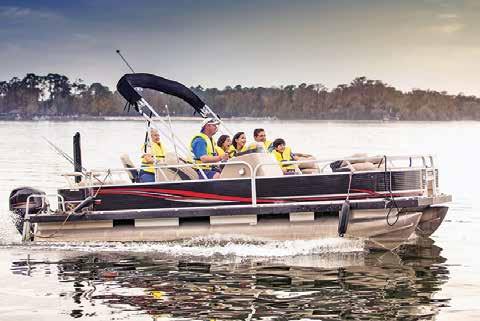
what noises and vibrations are normal. Pay attention when anything seems different, since that’s often the first indicator of a potential issue.
Change sterndrive or outboard gear-case oil every fall, or at least check for water intrusion while winterizing the engine. Send propellers with more than a couple of minor nicks to the prop shop to be reconditioned.
The paint on your boat’s bottom prevents marine growth, such as barnacles and sea grass, but its effectiveness varies by paint type, climate, region and even local water bodies. Ask around but expect to repaint the boat’s bottom every one to three years.
Unpainted metal anodes attached to sterndrives or inboard prop shafts and rudders are there to prevent corrosion. Replace them when they’re 50 percent deteriorated.
Maintenance-free batteries should last for three years or more.
Never ignore a hard-to-start engine, though, as even brand-new batteries occasionally fail. Fully charge batteries after each trip and before winter or prolonged storage, and have batteries load-tested every spring – a simple procedure done aboard the boat. Immediately address any signs of water dripping onto electrical panels or junctions, and don’t store gear where it might damage wiring.
Rinse your boat thoroughly after each outing and wash it once a week with mild boat soap – one that won’t remove wax. Southern latitudes and saltwater boating
require wax as often as every two months from the main deck up. Northern and freshwater boaters might wax only once a season.
You’ll know it’s time when grime becomes harder to wash off the boat. Between wax jobs, use a cleaner wax that scours the dirt, but also leaves behind a protective wax coating, to quickly touch up trouble spots.
Polyester or acrylic fabric covers and sunshades need just a good freshwater rinse, plus an occasional light scrub with Woolite or natural-soap flakes. Once or twice a season, rejuvenate stain and water repellency with fabric sealer.
Use only manufacturer-approved cleaners on window-like clear panels. Wash cushions with mild boat soap to remove sunscreen, food crumbs and dirt, and deep-clean and protect the fabric as needed with vinyl cleaner and protectant. Store cushions on their edge when you’re not using the boat so they dry inside and out.
Wax is the best protectant and cleaner for metal, particularly aluminum. Whatever you choose – spanning bright, glossy varnished trim to just soap and water on teak, letting its natural oil protect the wood – stay on top of it. Stripping old varnish once it starts to crack and peel is expensive, but a coat

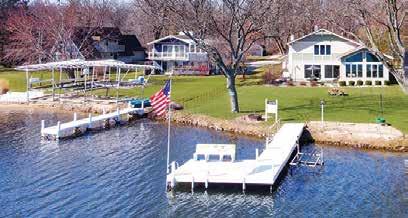

N8161 Rose Terrace, Elkhorn - Look no further, Lauderdale Lake Access in fabulous Gladhurst Subdivision featuring this 5 plus BD, 3.5 Bath, Contemporary, two story on private 1.67 acres featuring towering pine trees. Main level features kitchen and dining area with slider to patio, family room with fireplace, LR with vaulted ceilings, master bdrm with ensuite and walk-in closet, laundry and powder room. Upstairs has 3 Bdrms and full bath with double vanity. Finished lower level with huge Rec-Room with wet-bar, 4th BD and Bunk room plus full bath. Short walk to one of the finest lakefront assoc. parks with sand beach and sunsets. Fire pit in the backyard and 4 car attached garage completes the home. $689,700

W6757 Lake Shore Circ, Elkhorn - Welcome to your 1.7 acre lakeside paradise, nestled on the peaceful shores of North Lake! This charming cedar shake home boasts 578’ of frontage on both sides of the island, and is surrounded by mature trees, lush perennial gardens, and an orchard. Enjoy your private beach, dock, and 2023 seven-person hot tub. Several outbuildings are included. Inside, you’ll find a gorgeous stone fireplace, hardwood floors, and restored trim & hardware. Peaceful North Lake is known for kayaking, paddle boarding, fishing, & bird watching. Minutes to Kettle Moraine & Alpine Valley. Less than 1 hr from Madison, Milwaukee and Rockford. This house is a must see! $549,700




W5369 Baywood Dr Elkhorn - Welcome to your home that’s surrounded by lake views, a large yard for family fun as well as plenty of parking for everyone. Enjoy amazing 4th of July fireworks with the best seats in the house. Situated on 103’ of level frontage on 0.81 of an acre, you’ll find an updated, move in ready, 4BR, 3BA, two story home with upper end finishes. The large vaulted ceiling kitchen has an adjacent dining area & bonus playroom/den. The family room, also with vaulted ceilings, features a wall of windows that welcomes the lake inside. The living room with a natural fireplace and sliders leads to a spacious brick patio. This home offers the privacy of a main floor primary bedroom and the upper level has 3 generous sized bedrooms and 2 full baths. Accommodates 19 guests.. $2,099,700
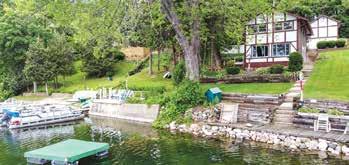
W5191 Ida Hall Ln, Elkhorn - Look no further, Lauderdale Lake Access in fabulous Gladhurst Subdivision featuring this 5 plus BD, 3.5 Bath, Contemporary, two story on private 1.67 acres featuring towering pine trees. Main level features kitchen and dining area with slider to patio, family room with fireplace, LR with vaulted ceilings, master bdrm with ensuite and walk-in closet, laundry and powder room. Upstairs has 3 Bdrms and full bath with double vanity. Finished lower level with huge Rec-Room with wet-bar, 4th BD and Bunk room plus full bath. Short walk to one of the finest lakefront assoc. parks with sand beach and sunsets. Fire pit in the backyard and 4 car attached garage completes the home. $599,700

300 W Main St, Palmyra - Located downtown Palmyra you’ll find this Turnkey established Restaurant/Bar and separate 4 lane bowling alley waiting for an energetic entrepreneur to bring their vision to life. Restaurant/Bar has a seating capacity of 173 with an updated kitchen in 2019. Charming bar area overlooking main street and soaring ceilings in the dining area. Potential outdoor space for a beer garden and additional space to expand the bar area or rental opportunity. Income producing apartments on the second floor which consist of a 3 Bd, 2 Bd and 1Bd currently rented. Liquor license included. Palmyra is in the heart of the Southern unit of Kettle Moraine Forest offering hiking, mountain biking and equestrian trails. Minutes from Blue Spring Lake and steps to Lower Spring Lake $749,700
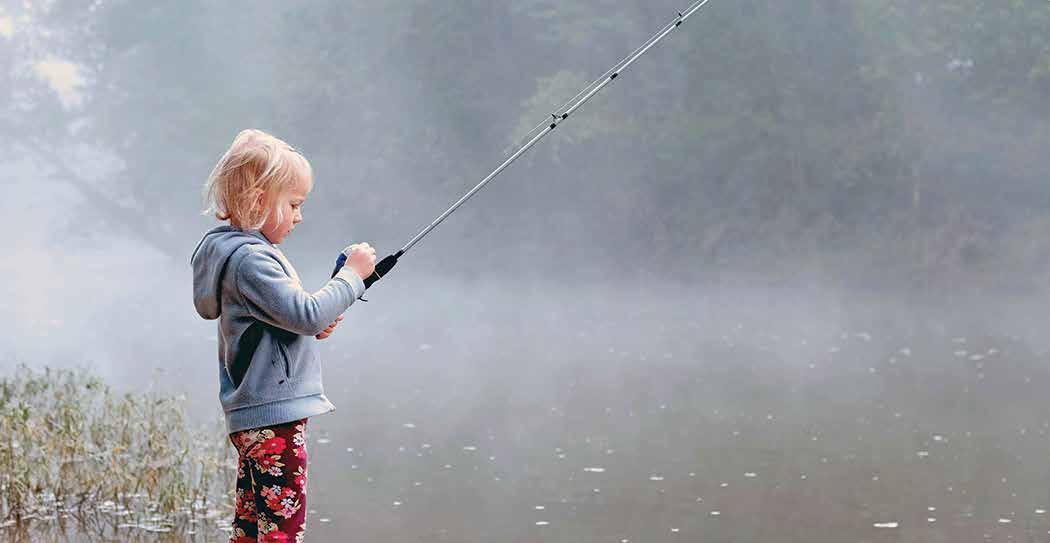
There are numerous places throughout the area suitable for fishing with children. Adults are required to have a license and children should be accompanied. Below is a partial list from the DNR website, including the location of the body of water and general directions. Notes related to fishing at each are included. It’s suggested to contact parks in advance to confirm hours and possible fees.
CHILDREN’S FISHING POND
In the Bong State Recreation Area at the junction of State Highways 142 & 75, about 8 miles southeast of Burlington. Urban fishing water – shoreline is accessible to public.
FOX RIVER COUNTY PARK
Located at the junction of County Highways F & W, north of Wilmot and just west of Silver Lake. Shorefishing opportunities.
VERN WOLF LAKE
In the Bong State Recreation Area at the junction of State Highways 142 and 75, about 8 miles southeast of Burlington. Accessible fishing pier. Shore fishing.
EAGLE LAKE
In Eagle Lake County Park on Church Road. 1/2 mile west of the intersection of state highway 75 and Church Road.
parking area.
GORNEY PARK
On Nicholson Road, 1.5 miles north of the junction of Nicholson Road and State Highway 38, in the town of Caledonia. Urban fishing water - shoreline is accessible to public.
JOHNSON PARK
On State Highway 38, one-half mile east of the junction of County Highway K and State Highway 38. Urban fishing watershoreline is accessible to public.
CEYLON POND PARK
In Big Foot Beach State Park. From downtown Lake Geneva, take State Highway 120 south about 1.5 miles to the park. Urban fishing water - shoreline is accessible to public. Fee for admission.
COMU S LAKE
In Rudy Lange Park in Delavan. Offers shorefishing opportunities.
CONDON PARK POND
At the junction of Interstate 43 and State Highway 50 in Delavan. Urban fishing water - shoreline is accessible.
GENEVA LAKE
Two locations: Village Park in Williams Bay, and Library Park in Lake Geneva. Sorefishing opportunities.
MILLPOND PARK URBAN FISHING POND
In Millpond Park on the south side of the Village of East Troy. Urban fishing watershoreline is accessible to the public. Fishing pier.
In a Whitewater city park. Highway 12 (East Milwaukee Street) in Whitewater to South Wisconsin Street to Coburn Lane, then east to the lake. Shorefishing opportunities.
In the Southern Unit of Kettle Moraine State Forest, 2 miles southeast of Whitewater in the Whitewater Lake Recreation Area. Access off of Highway P. Offers shorefishing opportunities. There is a fee for admission.
ASHIPPUN
In Oconomowoc. Take Capitol Drive west to State Highway 16, go west on 16 to County Highway P, then take P north to County Highway K, go west on K to McMahon Road. Watch for “public access” sign. Run by Waukesha County Parks. Park has picnic area, restrooms and shorefishing.
At the Fowler Lake Dam, on Highway 67, one-quarter mile north
• CONTINUED ON PAGE 16
There are many places throughout the area that can be considered when taking kids fishing, from lakes and parks to ponds and springs. The DNR provides an in depth list, including location and directions along with notes about what each of the sites offers.
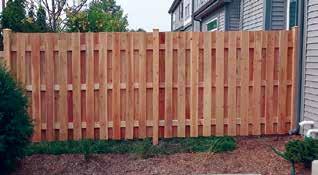
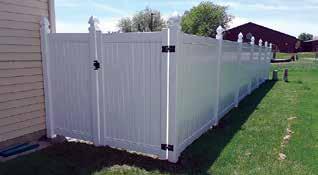

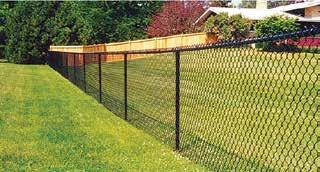
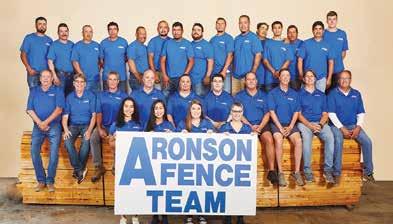

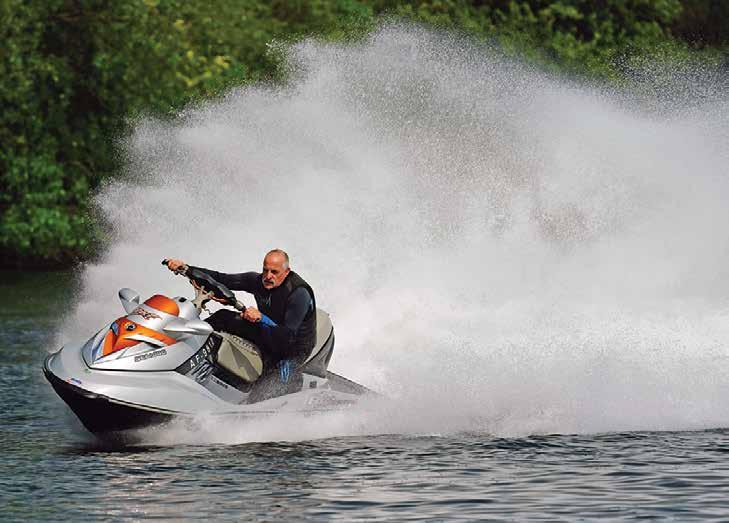
Sea-Doo suggests keeping the following safety tips in your watercraft or boat at all times and make sure that you and everyone aboard understands them all prior to leaving dock and observes them once out on the water.
• Know and understand all operational features of the craft you are riding – read and follow your operator’s guide.
• Ensure your watercraft is Coast Guard-compliant and has all required equipment.
Securely attach engine cutoff lanyard to your wrist or Personal Flotation Device. Keep attached at all times.
• All watercraft riders must wear a properly fitted, U.S. Coast Guard-approved PFD. The operator and passenger(s) of watercraft must wear protective clothing, including:
• A wet suit bottom or thick, tightly woven, snug-fitting clothing that provides equivalent protection. Thin bike shorts for example would not be appropriate. Severe internal injuries can occur if water is forced into body cavities as a result of falling into water or being near jet thrust nozzle.
• Normal swimwear does not adequately protect against forceful water entry into the lower body opening(s) of males or females.
• Footwear, gloves and goggles/glasses are also recommended. Some type of lightweight, flexible foot protection is recommended. This will help reduce possible injury, should you step on sharp underwater objects.
• Know your vessel’s capacity – don’t overload.
• Stay alert and be aware of your surroundings. Constantly look in all directions for skiers, divers, swimmers and other boats or watercraft.
• Keep a safe distance! Avoid wake jumping, splashing and passing close to any other vessels.
• Know the waters you will be operating in and observe all applicable federal, state and local boating laws.
• Know the weather conditions – tune into your local forecast.
• Stay clear of all restricted areas.
• Obey all posted signs, such as “No Wake,” “Right of Way,” “Idle” and other
navigation signs.
• Never consume alcohol or drugs before or while operating a watercraft or boat.
• All operators must be of legal age to operate the craft you will be riding.
• BRP recommends a minimum operator of 16 years of age to ride.
• Always operate at a safe speed and be prepared to stop or alter course in emergencies. Ride within your limits and allow sufficient distance to stop.
• Whether you’re heading in or out, always maintain a slow speed until you’re in a clear area, away from shore.
• Know and understand right-of-way rules.
• Remember you need throttle power to steer.
• Stay in sight of shore but avoid operating too close to residential and congested areas. Be considerate of others who share the waterways.
• A boating safety course is strongly recommended.
For more information, visit www.seadoo.com.
of varnish midseason, as soon as the finish dulls noticeably, is a quick, simple job. Ignoring and then revitalizing teak also shortens its life.
Use only recommended cleaning products aboard – many boats use plastic vanity mirrors, for instance, which are damaged by alcohol in household glass cleaners.
Water dripping from leaking hardware on deck can be hard to see, but if you find that one particular storage compartment smells musty, look around that area with a flashlight the next time you’re aboard during a rain shower.
Some water invariably finds its way into the boat, which collects in the bottom of the hull, or the bilge, in nautical terms. Bilge pumps keep that water level low, but there is always a bit of water left that can’t be pumped out. Add biodegradable bilge cleaner wherever that water collects to keep the boat smelling fresh.
If your boat has air conditioning, consider using the dehumidifier mode while you’re not aboard, but only if you’re able to check on the boat every day or two.
Clear debris from air conditioner’s seawater-plumbing strainers at least weekly, or anytime the air conditioner’s cooling-water stream coming out of the side of the boat seems to be weaker than normal. Clean the return-air filters in the cabin monthly.
Most air-conditioner problems stem from poor seawater flow, so inspect pumps and plumbing a few times each season.
Owner ’s manuals for each onboard system include maintenance schedules. When in doubt, ask a pro. Advice from other boaters is well-intentioned but not always correct for your boat. The boat dealer, or anyone who repairs boats for a living, is a much better source.
For more information, visit discoverboating.com.
of State Highway 16 in the Oconomowoc. Located just northeast of the beach and park on Lac La Belle. The beach and park are on Highway 16, just west of Highway 67. Has a disabled accessible public fishing pier.
Access from Idle Isle Park in Muskego on the northeast side of Little Muskego Lake. Take Martin Drive to Hardtke Drive to the park. Idle Isle Park has a beach, picnic area, restrooms, accessible public fishing pier and boat launch.
In Phantom Glen Park in Mukwonago. Take County Highway ES (Main Street) to Andrews Street, then go west into the park. Park with picnic area, restrooms, disabled accessible public fishing pier and boat ramp.
Trout pond located on the west side of Highway 67,
between Piper Road and Road X. About 3 miles north of Eagle. No facilities, but there is a picnic area with restrooms just a short distance away. DNR manages as a children’s trout fishing pond. Only artificial lures may be used and all trout caught need to be released.
In Nagawaukee County Park. Take County Highway C, three-quarters of a mile north of Interstate 94 in Delafield. Public beach, picnic area, restrooms and concessions, camping, shorefishing and boat launch.
Southeast of Oconomowoc, off of County Highway DR. County owned access on frontage road between the two lakes, Highway DR. shorefishing on Upper Nemahbin from the road rightof-way. DNR owned carry-in site on Lower Nemahbin off Sugar Island Road.

By Heather Ruenz EDITOR IN CHIEF
The Wisconsin Department of Natural Resources urges Wisconsin residents as well as the thousands of visitors to the state planning to boat or enjoy watersports this summer to wear a life jacket and be responsible.
With warming weather, the DNR anticipates an increase in boating, paddling and watersport activities in the coming days and remaining busy until the end of summer.
“Boating is a big part of Wisconsin’s culture and summertime fun,” said Lt. Warden Darren Kuhn, DNR Boating Law Administrator. “With that comes the responsibility of operating your boat safely and responsibly. Part of that is ensuring there are enough life jackets for everyone.”
As of June 10, there have been four boating fatalities in the state. In 2023, there were 28 boating fatalities, 27 of which involved a victim not wearing a life jacket.
Operator inexperience, inattention, recklessness and speeding are the four leading causes of tragic watercraft crashes, and the leading cause of death is drowning, the DNR reports.
The department does not track all drownings – only those fatalities linked to the use of a recreational activity item, such as a boat, kayak or canoe. The DNR’s Boating Incident Report webpage contains information on all fatality reports.
Statistics show boaters who wear life jackets and take boater safety courses are most likely to stay safe on Wisconsin waters.
“Just because you are a good swimmer doesn’t mean you shouldn’t wear a life jacket,” said Kuhn. “Accidents happen fast, and individuals can become incapacitated,
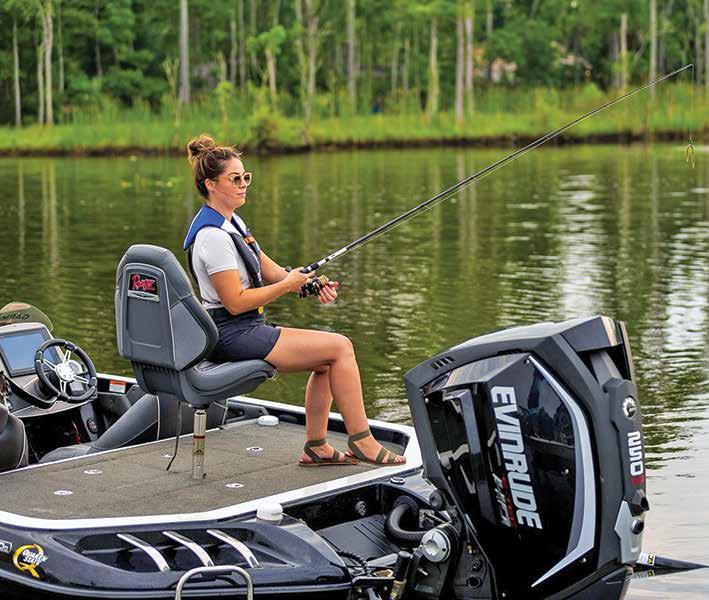
State DNR staff remind residents and visitors to wear a life jacket anytime they’re out on the water. Newer life jackets are more comfortable, lightweight and stylish. There are also innovative options such as inflatable life jackets that allow greater mobility and are much cooler in warm weather.
STOCK PHOTO Lake Living
exhausted or weighed down by wet clothing or gear.
“Wearing a life jacket can save your life and prevent a fun summer outing from becoming a tragedy,” he added.
New life jackets are more comfortable, lightweight and stylish than the bulky orange style most people think of. There are also innovative options such as inflatable life jackets – which allow greater mobility for fishing, paddling or hunting and are much cooler in warm weather.
It’s still early in the season, so special cold water precautions should be taken, especially on larger bodies of water.
“Cold water temperatures reduce your margin for error on the water: if you fall in or your boat capsizes, you may have as little as two minutes before losing your ability to move your muscles and get back in the boat or seek help,” DNR officials explain.
The DNR urges water enthusiasts to check boat equipment and review basic safety tips – if they haven’t done so already – to prepare for the upcoming water season.
“Safety is an important part of water fun,” Kuhn said. “(Our) rivers and lakes can be relaxing and family-friendly places to spend a day when you put safety first and respect the water.”
Officials recommend check that the boat and trailer lights and safety equipment are all in working order to save time and frustration at the boat launch. Note that a full checklist
of required equipment is available on the last page of the Wisconsin Boating Laws and Responsibilities Handbook.
It’s also important to inspect your life jackets for wear and tear. Most inflatable jackets should be checked for leaks every six months, and the cartridge should be checked before each use. The jacket manufacturer’s website should have instructions on how to check your life jacket status.
Regardless of what type of vessel “floats your boat,” operator inexperience, inattention, recklessness and speeding are the four leading causes of tragic watercraft crashes, and the leading cause of death is drowning.
Here are some tips from DNR officials, and even for those with years of experience on the water, it’s never a bad time to review suggested guidelines.
• Take an online boater education course – Those who are at least 12 years old, were born after Jan. 1, 1989, and will be operating a motorboat or personal watercraft in Wisconsin are required to pass a boater safety course and carry a boater education card.
While there are in-person classes offered at various locations, an online course can be done when convenient. Boat-ed.com, a delegated provider for the DNR, offers an approved online course.
• CONTINUED
The four leading causes of watercraft crashes remain operator inexperience, inattention, recklessness, and speeding, according to the DNR. By following rules and regulations as well as reminders, officials hope more of those who take to the water can do so safely.
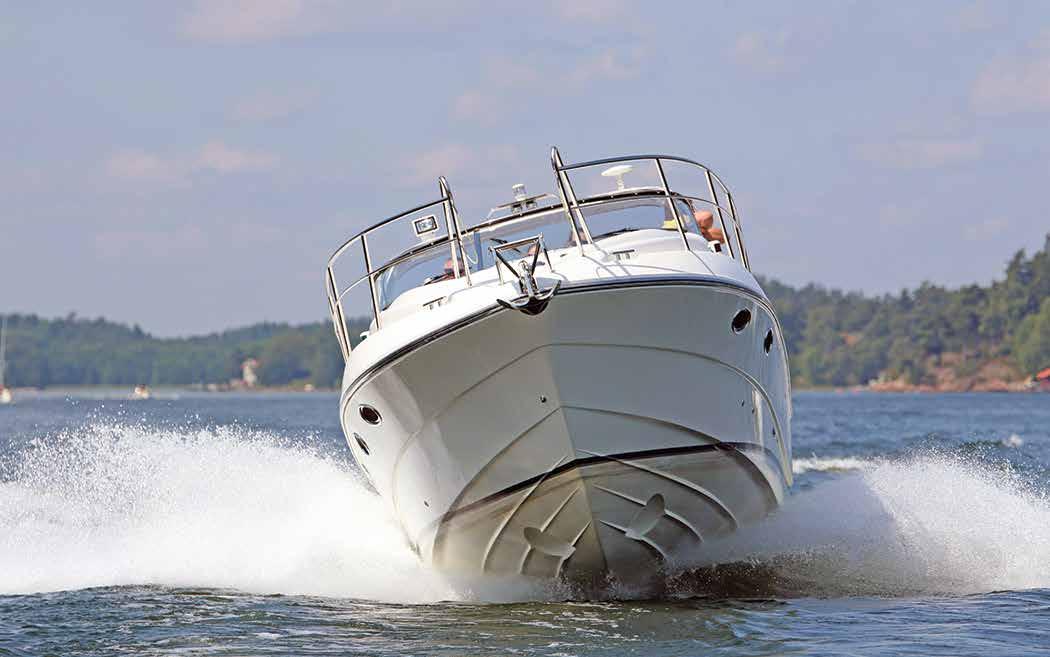
• Always wear a life jacket – A properly fitted and fastened life jacket will keep you on top of the water if you walk off an unexpected drop-off, a wave or current overpowers you or if you fall out of a boat.
• Leave the alcohol on shore – Enjoy the waters sober and know your limits. Alcohol and drugs can blur a person’s judgment, reaction time and abilities. Additionally, the effects of alcohol are greatly exaggerated by exposure to sun, glare, wind, noise, and vibration.
“Alcohol use continues to be a leading known contributing factor in recreational boater deaths and a leading contributor in boating crashes,” Kuhn said. “We want all boaters to enjoy their time on the water in a way that allows everyone to return home safely.”
• Use the right safety equipment – Have a fire extinguisher; have operable boat lights (always test them before the boat leaves the dock and carry extra batteries).
• Have emergency supplies – Keep on board in a floating pouch a cellphone, maps, flares and first aid kit.
• Be aware – River shorelines and sandbars pose unseen dangers. Higher, fast-moving water can tax an individual’s boating, paddling and swimming skills.
In addition to wearing a life jacket, here are some safety tips from the DNR for those who take to the waters via a canoe, kayak or
paddle board.
Carry a whistle
Be a competent swimmer
Know how to self-rescue
Be able to tow another board if needed
Know the local regulations and navigation rules
Understand the elements and hazards –winds, current, terrain
Know when to wear a leash
Be defensive – don’t go where you aren’t supposed to be and avoid other swimmers, boaters, paddleboards
Use proper blade angle to be the most efficient paddle boarder
Paddling safety courses are also available and suggested for those new to the sport.
Additional safety tips for paddlers of all kinds are available in the state’s Boating Laws and Responsibilities Handbook.
The DNR reminds those operating motorboats to open all hatches and run the blower after refueling and before getting underway.
“Sniff for fumes before starting the engine and if you smell fumes, do not start the engine,” they said.
Check the boat landing for any local regulations that apply. If boating on the Great Lakes or Mississippi River, review the federal regulations for additional requirements.
Remember that overloading a boat with
gear or passengers will make the boat unstable and increase the risk of capsizing or swamping. Abide by the boat’s capacity plate, which located near the boat operator’s position.
Follow navigation and other rules of the water, which include the following:
– Never allow passengers to ride on gunwales or seatbacks or outside of protective railings, including the front of a pontoon boat. A sudden turn, stop or start could cause a fall overboard.
– After leaving the boat launch, maintain slow-no-wake speed for a safe and legal distance from the launch.
– Follow boat traffic rules.
• Be weather wise – Regardless of the season, keep a close eye on the weather and bring a radio. Also, always let someone know where you’re headed and when you expect to return prior to leaving.
Sudden wind shifts, lightning flashes and choppy water all can mean a storm is brewing. If bad weather is approaching, get off the water early to avoid a long waiting line in inclement weather.
• Create a float plan and tell people when and where you plan to depart and return before going for a float or paddle.
For more information, including an online version of the Wisconsin Boating Laws and Responsibilities Handbook, visit dnr. wisconsin.gov/topic/Boat.
Sugar Creek Mutual Insurance Company
Elkhorn 262-723-3244
Banco Insurance Agency
Palmyra 262-495-2118
Policyholders who work with a
Whitewater 262-473-7334
Policyholders who work with a
getting
because
becauseiknowwe’re inthistogether.”
Breck Ward
serve
Policyholders who work with a mutual insurance company have a shared purpose: getting the best coverage and protection available. And mutual insurance delivers because mutuals serve policyholders, not shareholders. Our decisions are always “Ichoosemutualinsurance
becauseiknowwe’re inthistogether.”
Elkhorn 262-215-5633
because mutuals serve policyholders, not shareholders. Our
are always based on what’s best for you. Plus local agents offer customized solutions for all your insurance needs. Find out how mutual insurance can work for you.
Patricia Lauderdale
Find out how
Policyholders who work with a mutual insurance company have a shared purpose: getting the best coverage and protection available. And mutual insurance delivers because mutuals serve policyholders, not shareholders. Our decisions are always
Elkhorn 262-742-3818
“Ichoosemutualinsurance becauseiknowwe’re inthistogether.”
Policyholders who work with a mutual insurance company have a shared purpose: getting the best coverage and protection available. And mutual insurance delivers
Policyholders who work with a mutual insurance company have a shared purpose: “Ichoosemutualinsurance becauseiknowwe’re inthistogether.”





